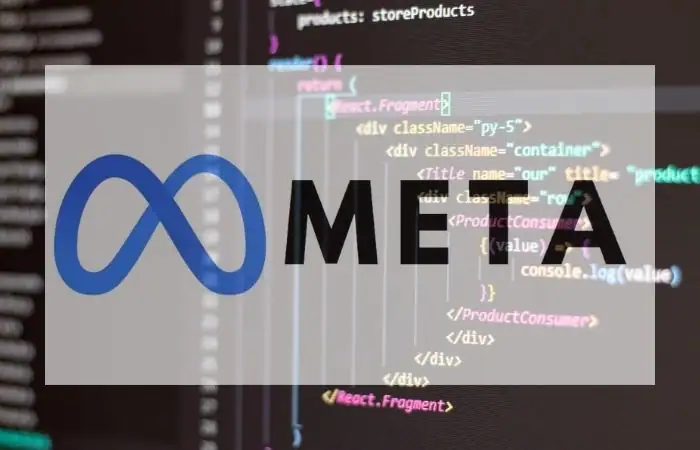Meta, the company behind Facebook, has recently released Code Llama, an AI model designed to generate code. This open-source machine learning system is capable of creating and explaining code in natural language, specifically English. Similar to other code generators like GitHub Copilot and Amazon CodeWhisperer, Code Llama can complete unfinished code and debug existing code across various programming languages. Meta believes in an open approach to AI models, allowing the entire community to evaluate their capabilities, identify issues, and fix vulnerabilities. However, like other generative AI tools, Code Llama also poses risks such as generating inaccurate or objectionable responses. Developers are advised to perform safety testing and tuning tailored to their specific applications before deploying Code Llama. Despite the risks, Meta places minimal restrictions on how developers can use the model, aiming to support software engineers in various sectors.

Overview
In this comprehensive article, we will explore Code Llama, an open-source code-generating AI model developed by Meta. Code Llama is capable of generating and explaining code in natural language, specifically English. We will delve into its capabilities, training process, models, performance comparison, adoption and benefits, as well as risks and considerations.

1. Introduction
Code Llama is the latest addition to Meta’s open-source AI models that aim to revolutionize the generative AI space. With an emphasis on an open approach, Meta believes that publicly available code-specific models can drive innovation and enhance safety. In this article, we will examine the features and potential impact of Code Llama.

2. Code Llama: An Open Source Code-Generating AI Model
Code Llama, similar to GitHub Copilot, Amazon CodeWhisperer, and other AI-powered code generators, has the ability to complete code and debug existing code across multiple programming languages. It supports languages such as Python, C++, Java, PHP, Typescript, C#, and Bash. Meta released Code Llama as an open-source machine learning system, aiming to provide the entire community with the opportunity to evaluate its capabilities, identify any issues, and fix vulnerabilities.
2.1 Code Llama’s Capabilities
Code Llama boasts impressive capabilities in generating code and understanding instructions. It can generate code snippets based on natural language prompts, making it useful for various programming tasks. It has been optimized for Python and fine-tuned to understand instructions, enabling developers to interact with the model in a more intuitive manner.
2.2 Training Process
To train Code Llama, Meta utilized a vast dataset comprising publicly available sources from the web. The training data was a combination of code-related information and other relevant data. Additionally, the Python-specific version of Code Llama underwent further fine-tuning with a focus on Python code. The training process involved leveraging feedback from human annotators to ensure the generation of helpful and safe answers to questions.
2.3 Code Llama Models
Code Llama is available in various models, each varying in size and parameters. The models range from 7 billion parameters to 34 billion parameters, which affects their performance and capabilities. Meta claims that the 34 billion-parameter model is not only the best-performing code generator but also the largest in parameter count among all open-sourced code generators.
2.4 Performance Comparison
In comparison to other code generators, Code Llama exhibits impressive performance. Its ability to insert code into existing code and process input tokens makes it a versatile tool for developers. Meta’s 34 billion-parameter model outperforms other code generators, ensuring high-quality code generation and improved productivity for developers.
2.5 Adoption and Benefits
Code Llama aims to benefit the entire coding community by providing code-specific models for developers across different sectors. Its open-source nature encourages innovation and allows developers to leverage the power of AI in their projects. With the adoption of Code Llama, developers can expect increased productivity, faster learning, and enhanced code generation.
2.6 Risks and Considerations
While Code Llama offers immense potential, there are risks and considerations associated with using generative AI models for coding. Engineers using AI tools can unintentionally introduce security vulnerabilities in their applications. Additionally, there are concerns about intellectual property rights and potential misuse of code-generating models. While Meta has taken precautions and conducted internal audits, developers should perform safety testing and tuning to ensure the model meets their specific application needs.

3. Code Llama Deployment and Usage
Code Llama can be deployed and used with minimal restrictions. Developers have the freedom to integrate the model into their commercial or research use cases, as long as they adhere to ethical guidelines and refrain from using Code Llama for malicious purposes. In certain cases, when deploying the model on platforms with a large user base, a license may be required to ensure responsible usage.
3.1 Minimal Restrictions
Meta places minimal restrictions on developers when it comes to deploying Code Llama. The company believes in empowering software engineers across various sectors, including research, industry, open-source projects, NGOs, and businesses. The primary requirement is to use the model responsibly and not for any malicious intent.
3.2 Safety Testing and Tuning
To mitigate potential risks associated with code generation, developers should conduct thorough safety testing and tuning before deploying Code Llama. Tailoring the model to specific application needs ensures that it generates accurate and secure code. By performing comprehensive testing, developers can identify any shortcomings or potential issues and fine-tune the model accordingly.
3.3 Commercial and Research Use Cases
Code Llama is designed to support software engineers in both commercial and research settings. Its open-source nature encourages developers to create innovative tools that cater to their specific use cases. Meta hopes that Code Llama will inspire developers to leverage the underlying Llama 2 model and create new and groundbreaking applications in research and commercial products.

4. Future Potential of Code Llama and Llama 2
Code Llama represents a significant leap in AI-generated code models. Its capabilities and open-source nature provide developers with powerful tools to enhance their coding productivity. As Meta continues to refine and develop its AI models, including Llama 2, the potential for future advancements in code generation and natural language understanding is immense. With Code Llama as a stepping stone, developers can explore new possibilities and contribute to the advancement of AI technology in coding.
In conclusion, Code Llama is a groundbreaking open-source code-generating AI model developed by Meta. Its capabilities, training process, and deployment options offer developers a powerful tool for code generation and understanding. While there are risks and considerations associated with AI-powered code generators, proper testing and responsible usage can help mitigate potential issues. As developers embrace Code Llama and leverage its potential, the future of AI-assisted coding looks promising.












